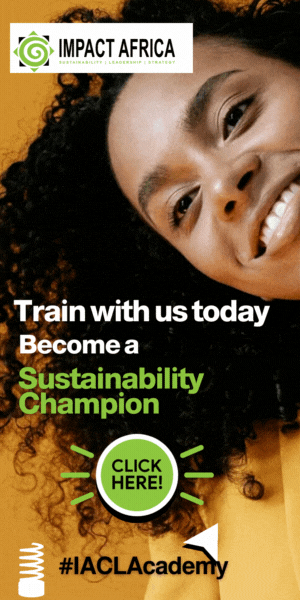Sanlam Investments recently announced that it will serve as the title sponsor of Africa’s Green Economy Summit (AGES) for a third consecutive year; the summit is scheduled for 24–27 February 2026 at the Century City Conference Centre in Cape Town, and the company says the renewal is aimed at accelerating financing into renewable energy, water security, waste reduction, the blue economy and climate finance by combining sponsorship, blended-finance partnerships and targeted investment products.
Sanlam’s renewed backing reads as a deliberate shift from event patronage toward practical market-making. The firm is framing the relationship not as a branding exercise but as an attempt to shorten the distance between capital and implementable projects: AGES has presented more than ninety investment-ready initiatives since 2023, valued at roughly US$8.7 billion, yet for many of those initiatives the path from pitch to procurement remains punctuated by familiar financing gaps, regulatory frictions and local capacity constraints.
Converting a pipeline of opportunities into functioning infrastructure requires patient capital, explicit risk allocation and genuine local institutional participation; Sanlam’s value proposition to date is a promise to deploy instruments that address those needs.
Read also: Rescued African Grey Parrots take flight as DRC tightens ban on wildlife trafficking
The attraction of blended finance is its operational consequence. In East Africa, off-grid solar companies routinely combine philanthropic grants, concessionary loans and commercial debt to make mini-grids and solar-home systems viable. In Southern and East African coastal zones, investment in cold-chain and processing transforms seasonal catches into export-grade product and reduces post-harvest losses, turning subsistence activity into sustained enterprise. These are not abstract examples; they are exactly the kinds of projects AGES pitches to investors and the forms of deployment Sanlam says it seeks to support.

What determines whether this pipeline becomes a set of completed projects is the ability of convenors and sponsors to align early concessional capital, guarantee instruments and domestic institutional investors in ways that make later commercial tranches bankable.
Sanlam articulates a “holistic return” philosophy that links financial performance to measurable social and environmental outcomes. The credibility of that claim will hinge on allocation decisions and transaction design. Practical localisation matters: co-investment mandates that bring domestic banks and pension funds into structures; capacity building so local developers meet bankability criteria; and procurement choices that prioritise domestic supply chains. When those elements are present, investment yields can serve both investors and local economies; when they are absent, capital risks flowing through the continent without delivering stable jobs or equitable benefit sharing.
There are structural barriers that repeatedly slow action. Many projects require layered financing across grants, concessionary tranches and market-rate debt, and they fail to proceed when one layer is missing. Specific constraints, unclear land rights, unpredictable tariff frameworks for grid-connected projects, and import duties that raise equipment cost, are often the proximate cause of stalled deals.
In markets where the policy environment is stable and where targeted guarantees exist to absorb early loss, projects move faster. The practical task for AGES and its sponsors is to ensure that the matchmaking it provides is accompanied by instruments and policy advocacy that remove these bottlenecks.

The summit’s format, pitch stages, deal rooms and curated matchmaking, can reduce search frictions between developers and funders. But the convening benefit is only meaningful when the post-summit sequence produces transparent term sheets, timely due diligence and clear timelines to financial close.
For stakeholders across Africa, the most useful metrics will be tangible: the share of projects that secure first-loss or guarantee instruments, the proportion of capital directed to small and medium enterprises, and the number of deals that reach financial close within 12 months of presentation. Those yardsticks turn summit rhetoric into verifiable outcomes.
Sanlam’s emphasis on adapting global frameworks to African realities is welcome, but it requires hard institutional choices. Localisation will be effective only if co-investment structures meaningfully include domestic institutions, if monitoring and evaluation systems transparently track jobs and emissions, and if benefit-sharing arrangements with host communities are enforceable. Otherwise, the risk is that capital flows without producing durable social or ecological gains.
Read also: AU unveils $30bn Green Aviation Plan to transform Africa’s airspace
Viewed practically, Sanlam’s renewed title sponsorship is an invitation to action for three groups. Policymakers must streamline regulations and tariff regimes so projects can be bankable. Financiers must design instruments that absorb early-stage risk and crowd in domestic capital. Communities and civil society must demand transparency and ensure that benefits are distributed equitably. AGES can be a platform where those actors align, but alignment is not the same as impact.
As the summit returns to Cape Town next year, Sanlam’s backing improves the prospects that pledges will translate into financed projects. Whether those prospects materialize will depend on the depth of follow-through: signed term sheets, procurement plans that prioritize local value chains, and projects that move into construction and operation with measurable improvements in livelihoods and resilience.
The test for AGES 2026 will therefore be practical and narrow, executed contracts and working assets, not rhetoric. If organizers and sponsors can deliver those, the summit will have done more than create visibility; it will have helped build a replicable pathway for financing Africa’s green transition.
Register to attend the event, here.




